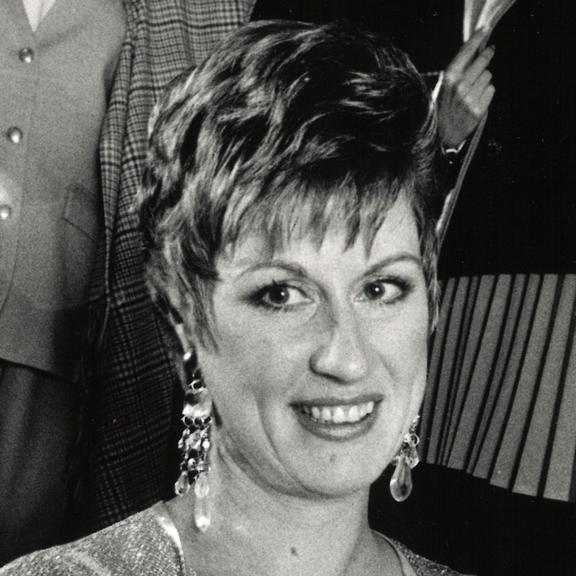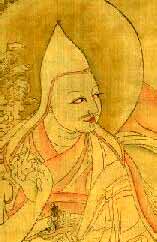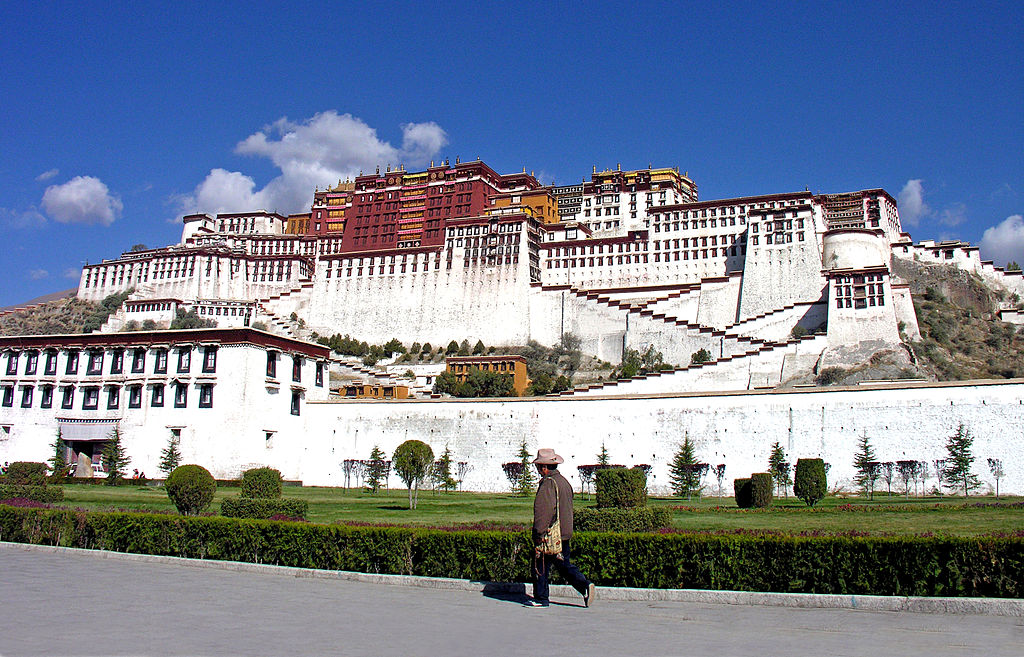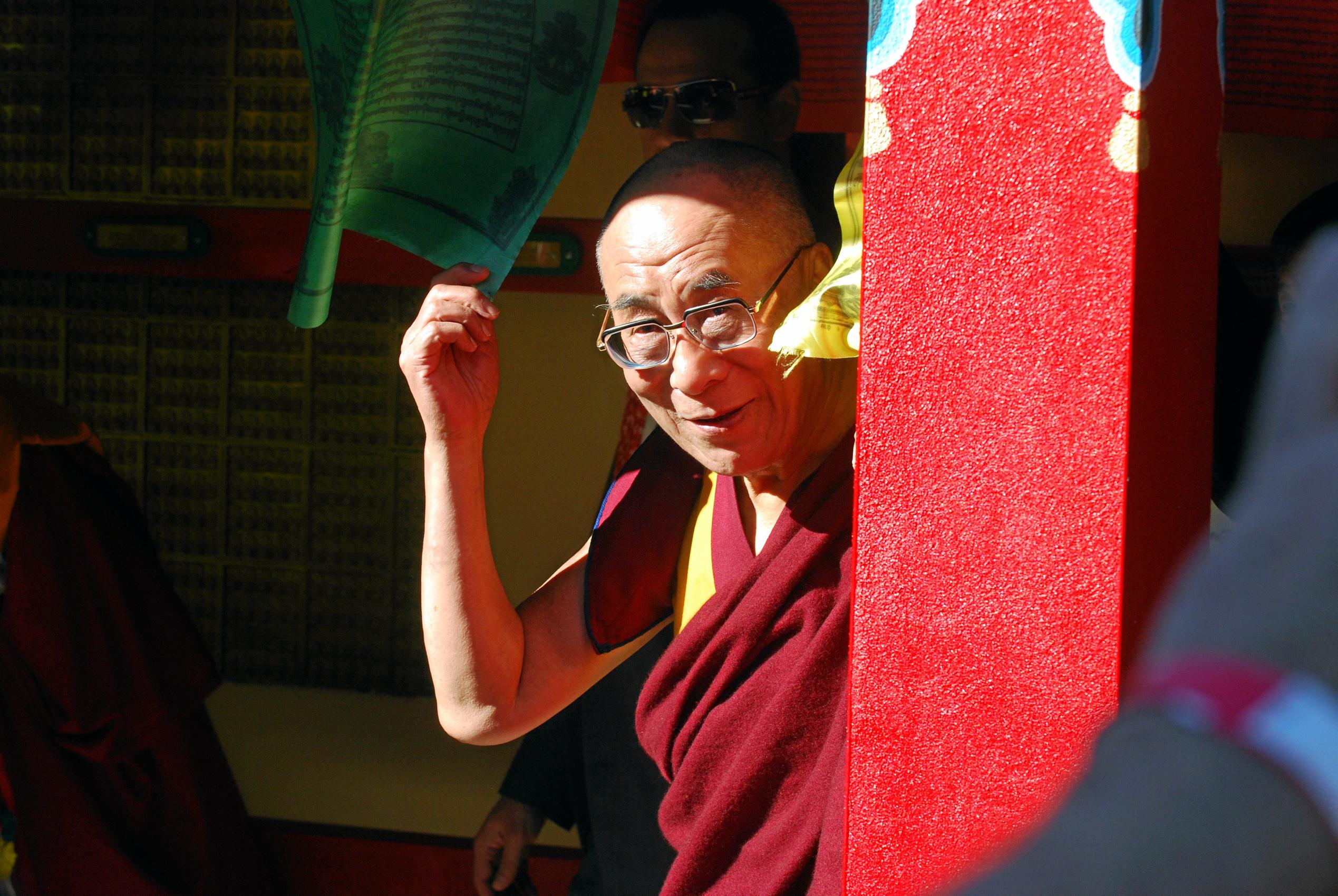Perri Cutten: A Timeless Legacy in Fashion
Remembering Perri Cutten: A trailblazing Australian fashion designer whose timeless elegance and...

 Search...
Search...
Dalai Lama is the honorary title given to the head monk of Tibetan Buddhism. A realised being, he is "inspired by the wish to attain complete enlightenment, who have vowed to be reborn in the world to help all living beings."

It is believed that the current Dalai Lama is a reincarnation of the previous Lama. A person who chooses to be reborn continually, inheriting the spirits and wisdom of his previous life, is known as tulku. Buddhist scholars add that to find the next Dalai Lama, it also rests in the hands of the High Lamas who must wait until they see a vision or dream, as well as the Tibetan government.
This notion has been the way for many hundreds of years, however the current 14th Dalai Lama, Tenzin Gyatso has stated this does not have to be so set in stone anymore.
"...reincarnation is a phenomenon which should take place either through the voluntary choice of the concerned person or at least on the strength of his or her karma, merit and prayers."
1391 to 1474 | Tashi Lhunpo Monastery, Tibet
Born with the name Pema Dorjee, Gedun Drupa at a young age was very aware of the famous Great Tsongkhapa, founder of Gelugpa School. He later became one of his disciples and because he demonstrated great loyalty and devotion to Tsongkhapa, he was gifted new robes as a sign that he would spread Buddhist teachings throughout Tibet.
A highly respected religious figure, Gedun Drupa was a great scholar, famous for merging study and practice and wrote a number of voluminous books on his Buddhist teachings and philosophy.
1475 to 1542 | Drepung Monastery, Tibet
It is said that some of the very first words Gedun Gyatsohe spoke to his parents was that his name was Pema Dorjee, the birth name of the 1st Dalai Lama.
Strict in his monk vows and somewhat outspoken in contrast to his predecessor, Gendun Gyatso is remembered as one of the great builders of the times and built small monasteries and also reinstated the annual Great Prayer Festival.
1543 to 1588 | Drepung Monastery, Tibet
Sonam Gyatso's parents, having had many children, all of whom died, wanted to ensure no more misfortune would come their way, and fed their newborn milk from a white goat - The prosperous one saved by goat's milk.
Sonam Gyamtso was in fact the first Dala Lama to officially be recognised with the title. During the 1570s, he was invited by the Mongolian King, Altan Khan to spread his teachings in Buddhism. 50 years on, Tibetan Buddhism had spread throughout the land and the King bestowed the honored title of Dalai Lama to Sonam Gyatso, which means Ocean of Wisdom.
1589 to 1617 | Based Drepung Monastery, Tibet
Yonten Gyatso was born in Mongolia to the Chokar tribal chieftain Tsultrim Choeje, who was the grandson of Altan Khan. The abbot of Gaden monastery having discovered oracle predictions and auspicious signs at Yonten's birth, recognised him as the true reincarnation of the 3rd Dalai Lama - although, they were said to be anxious at first, for an oracle had not before presented in Mongolia.
The young boy's journey to Tibet was delayed until he was 12 because the Mongols had become quite attached to the incarnate, but he eventually became abbot of Drepung monastery.
1617 to 1682 | Tritse Marpo, began construction Potala Palace, Tibet

Lobsang Gyatso was known as The Great Fifth.
When the chief attendant of the 4th Dalai Lama learnt of the special Chong-Gya boy, who had miraculous visions and great foresight, he visited the child and presented articles belonging to the previous Dalai Lama - without histitation the boy said they belonged to him.
Lobsang Gyatso was a great scholar, who wrote a number of books and started two educational institutions where they taught Mongolian, Sanskrit, astrology, poetry and administration. A man of few words, he was said to have carried conviction and influenced rulers far beyond Tibet. When he died in 1682, aged 65 he asked that his death be kept secret until the Potala Palace was completed.

1683 to 1706 | Potala Palace and Norbulingka palace, Tibet
With the order of the 5th Dalai Lama to keep his death secret until the completion of the Potala Palace, the charade lasted 15 years.
In 1697, when Tsangyang Gyatso was 14 he was finally enthroned as the 6th Dalai Lama. This however didn't last long for a conflict between the Desi and Lhasang Khan in 1701 left the young Dalai Lama so disturbed that he rejected life as a monk and spent his time wandering the streets drinking, singing and having rather unruly relations with women.
China's Emperor even tried to assassinate him and attempted to claim another to be the true reincarnation of The Great Fifth, but the people rejected this and he remained the true 6th Dalai Lama.
1708 to 1757 | Potala Palace and Norbulingka palace, Tibet

Thupten Jampaling Monastery was astounded by the child and of the oracles of the 7th Dalai Lama, Kelsang Gyatso. Enthroned in the Potala Palace in 1720, he devoted himself to studying the entire Buddhist philosophical works and became a master in both the sutra and tantra.
The 7th Dalai Lama went on to become both the spiritual and political leader of Tibet. A great scholar, his simple and pure life won him the hearts of all Tibetans.
1758 to 1804 | Potala Palace and Norbulingka palace, Tibet
As soon as the 8th Dalai Lama was conceived, the Lhari Gang in the Tsang region of southwestern Tibet was blessed with an unprecedented harvest, with barley stalks bearing three, four and five ears. Then while the mother was in the garden having supper with a relative, a rainbow appeared, one end touched her shoulder - an auspicious sign associated with the birth of a holy being.
Once Jamphel Gyatso was born, he was often seen looking heavenward and smiling, and attempted to sit in a meditative, lotus pose. When the child could first speak he said: "I will go to Lhasa at the age of three". News of the boy quickly spread and Tibet knew the child was the oracle and he was pronounced the authentic reincarnation of the 7th Dalai Lama.
1805 to 1815 | Potala Palace and Norbulingka palace, Tibet
Lungtok Gyatso was recognized as the reincarnation of the 8th Dalai Lama in 1807 and was enthroned at the Potala Palace. Sadly he lived a very short life and in 1815, died at the young age of nine.
1816 to 1837 | Potala Palace and Norbulingka palace, Tibet
Tsultrim Gyatso was recognised and enthroned in the Potala Palace in 1822, taking his vows of monkhood in the same year. Unfortunately, the Dalai Lama always had poor health and died in 1837, aged 21.
1838 to 1856 | Potala Palace and Norbulingka palace, Tibet
Khedrup Gyatso was recognised as the new Dalai Lama in 1841 and was enthroned the following year at Potala Palace, taking his novice vows of monkhood at age 11. Even though the boy was so young, he took on the responsibility of Tibetan spiritual and political leader, however died suddenly in 1856, aged 18.
1857 to 1875 | Potala Palace and Norbulingka palace, Tibet
In 1858, the young Trinley Gyatsoy was announced Dalai Lama and given the name Thupten Gyatso. In 1860, at age five, he took the novice vows of monkhood and when he was 18, became the spiritual and political leader of Tibet. Sadly he too died young in 1875, aged 20.
1876 to 1933 | Potala Palace and Norbulingka palace, Tibet

Thupten Gyatso, was recognised as the reincarnation of the 12th Dalai Lama in 1877 after news spread of predictions and auspicious signs at his birthplace.
During his time as leader, he was thrown into a great number of ordeals having survived the British invasion of Tibet in 1904 and the Chinese invasion in 1909/10. In both experiences it's said his authority rose enormously and governed with political strength not seen since The Great Fifth.
Thupten Gyatso modernised Tibet, and fascinated by the modern world he introduced the first Tibetan currency notes and coins. He reasserted Tibet's Independence, built Tibet's first post office, Police Headquarters and sent four young Tibetans to England to study engineering. He also strengthened Tibet's military force, established the Tibetan Medical and Astrology Institute to ensure the preservation of traditional Tibetan medical and astrological systems and built the first English school of Tibet. Sadly, he died in 1933 aged 58 before accomplishing his goal for Tibet's total modernisation.
1935 - Alive | Dalai Lama Temple, India

His Holiness the 14th Dalai Lama, Tenzin Gyatso, is known to be a simple Buddhist monk and a man of peace. His life story is preserved for another day. Sticking with the topic of reincarnation however, as far back as 1969, his Holiness has said that if a reincarnation should be recognised, it would be a decision for the Tibetan people, Mongolian people and the people of the Himalayan regions to make.
"Whether you believe in God or not does not matter so much, whether you believe in Buddha or not does not matter so much; as a Buddhist, whether you believe in reincarnation or not does not matter so much. You must lead a good life. And a good life does not mean just good food, good clothes, good shelter. These are not sufficient. A good motivation is what is needed: compassion, without dogmatism, without complicated philosophy; just understanding that others are human brothers and sisters and respecting their rights and human dignity."
By Kirsten Jakubenko
Sources: